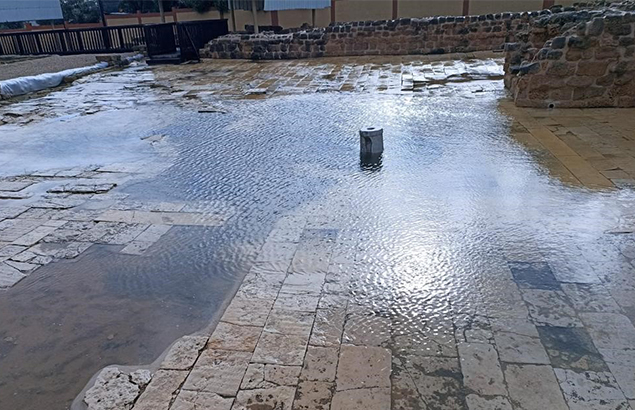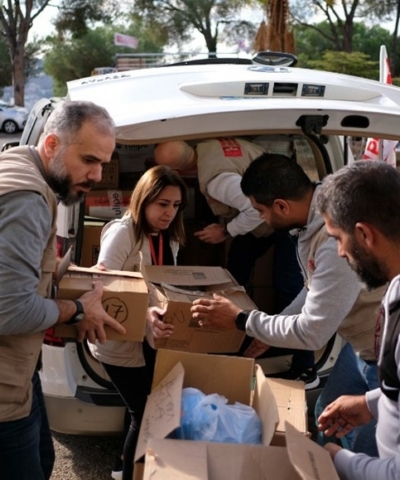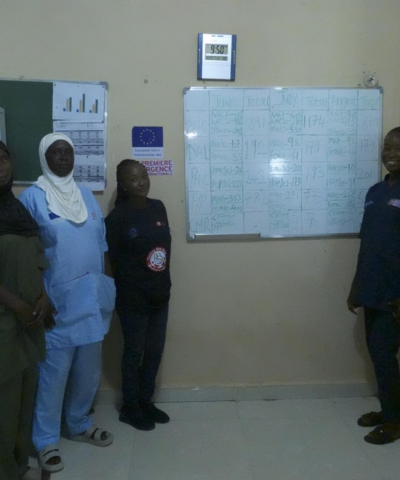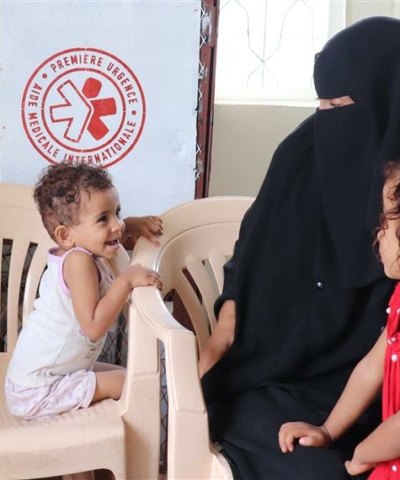News
Palestinian heritage at risk: heavy seasonal rains threaten the remains of several sites
Publié le 09/01/2023

Due to heavy seasonal rains and climatic changes, long-term protection measures are needed to protect the remains of the monastery of Saint Hilarion, Al Bureij and the Roman necropolis.
Climate change is an important risk factor
In recent years, Gazans have witnessed a consistent increase of pluviometry and multiplication of the violent winter storms (sands and rains) in a few months due to climate change (November-March). According to the Palestinian Water Authority, in just a few days, recent rains have reached 73% of the annual rainfall rate in the Gaza Strip.
Heavy rainfalls has a direct and indirect impact on the palestinian archaeological remains:
The direct impact consists of a torrential runoff that results in the leaching of mortars from pavements and the gradual deconstruction of soils until their collapse. These rains also have adverse effects on rising built structures. In the site of Tell Um Al Amer, the heavy rains have led to swelling of mortars to the earth of the walls implying their possible collapse. Associated with the topography of the site (south-north slope) and the geology of the site (poorly draining clay soil), the heavy rainfalls will inevitably alter the pavements and lead to the loosening of the mosaic mats and existing remains.
The indirect impact is related to the underground flow of water after infiltration into the sand and then to its resurgence, and mainly affects the remains below the dune and especially the crypt. By its position below the site, the crypt has become over time the point where rainwater converges after being absorbed by the soil. This slow migration causes the masonry to deteriorate by the accumulation of the efflorescence of fine white minerals on their surface (saltpeter or sea salt) during its evaporation. This phenomenon of mineralization leads to bursting on the surface of the masonry and the development of green and pink algae.
Without sustainable protective measures above the palestinian archaeological remains, this risk will persist and worsen
If emergency measures are useful, a sustainable protection is indeed required. Following the heavy rains on November 8th 2022, + 0.30 m of rain water and mud spilled onto the pavements and remains. A significant accumulation of water and a large amount of debris were found in Al Bureij and Saint Hilarion sites. As a matter of emergency, a preservation programme is currently being developed with the support of UNESCO and the British Council Cultural Protection Fund to safeguard temporarily Al Bureij mosaic pavements from violent winter rains to contain and divert rainwater from the plots located upstream.
Protection is crucial to protect these very important mosaic pavements. Five mosaic carpets with polychrome decorations have been so far revealed on the site. The richness of their polychromy and the finesse of their execution are exceptional. From an anthropological and ethnological point of view, the site will provide new knowledge about human activity in the Late Antique period in the Wadi Gaza region.
More should be done : permanent protective roofs are required to protect Saint Hilarion monastery, Al Bureij and the Roman Necropolis sites.
Hence, with the support of Agence Française de Development (AFD), our teams are assessing the possibility to construct of a protective shelter above the most fragile remains in St Hilarion Monastery to:
- efficiently protect the remains from deterioration due to climatic effects and natural elements : heavy rains during winter, but as well from rain evacuation difficulties, sand winds or vegetation,
- reduce the needs for maintenance and/or restoration of remains due to natural elements’ effects,
- keep the remains visible, and allowing the public to actually discover the Palestinian archaeological remains on-site,
- create a sustainable economic model for the site through the installation of solar panels.
Video link : heavy rainfalls on Saint Hilarion Monastery
Sources :
- International Committee of Red Cross, 2022, Gaza : on the frontline of climate change
- Palestinian Water Authority, The last rainfall raised the proportion of rain to 43% in West Bank and to 73% in Gaza Strip
- INCA, march 2021, Tell umm el-’amr monastery as a venue for socio-economic development feasibility study presentation report



